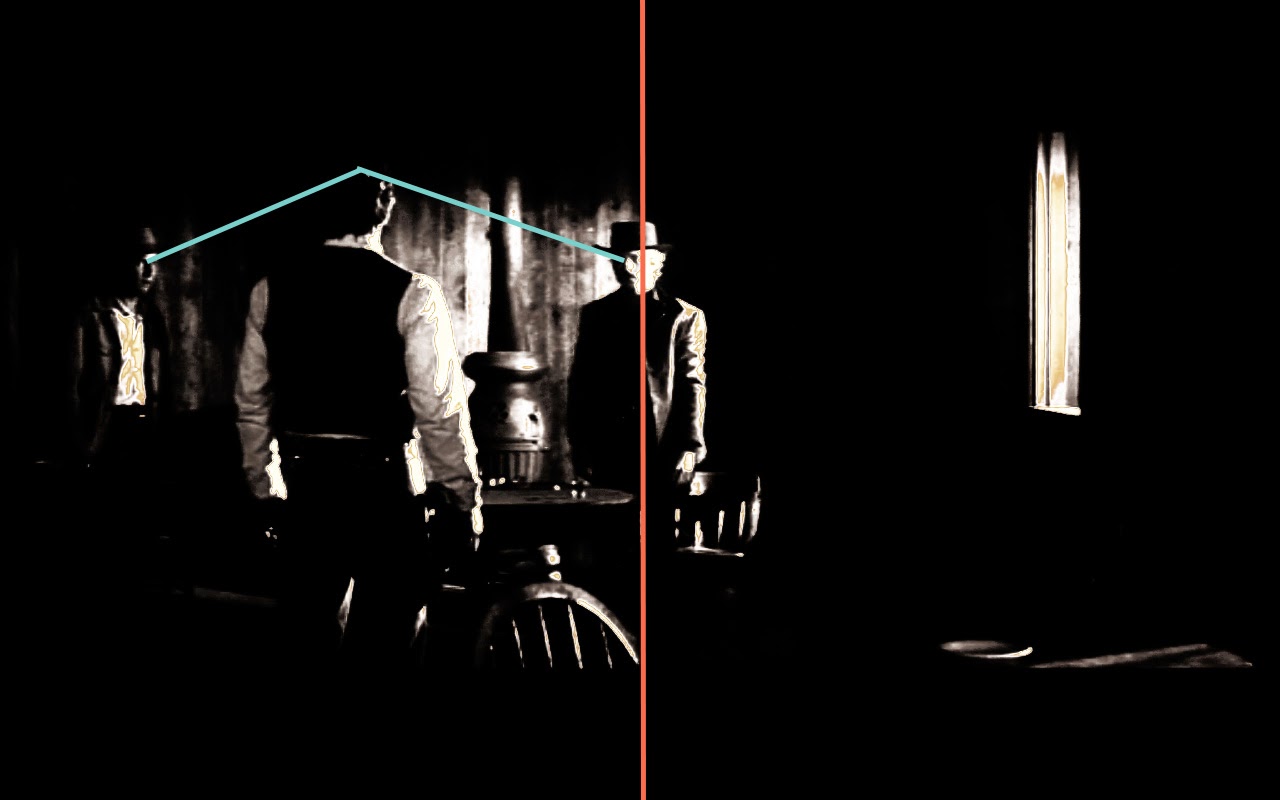Butch Cassidy and the Sundance Kid.
“Most of what follows is true.”
These words follow the opening title sequence of Butch Cassidy and the Sundance Kid (1969),
a series of sepia-tone clips of robberies projected on an old theater screen.
Moments later, the scene opens on a sepia-tone shot of a barred-up bank in and
old western town that is soon revealed to be a reflection in a window. The
camera pulls focus onto a close-up shot of Butch Cassidy (Paul Newman) standing
in a dark room behind the window, looking introspectively at the gated
building. The camera then begins a long continuous tracking shot of Cassidy
walking through the town and entering the old dim bank. This smooth sequence is
abruptly cut off by a sequence of sharp cut close-ups of bankers and guards
slamming windows, closing locked vaults, and smacking down “closed” signs. The
camera continues to cut to Butch’s face as more and more light-sources are cut
off, until the final shot of him is a high-contrast shot of only half of his
face perfectly illuminated, and everything else pitch black.
Butch asks, “What happened to the old bank? The old bank was
beautiful,” to which the guard responds, “People kept robbing it.”
Butch leaves the bank with the famous closing comment,
“Small price to pay for beauty.”
 |
| Intro sequence of Butch Cassidy and the Sundance Kid |
This scene perfectly describes the Mise-en-scene for the entirety of Butch Cassidy and the Sundance Kid. The
1969 film is filled with bank heists and train robberies, but these crimes are
only a small price to pay for the beauty of the film. Having rightfully won the
1970 Academy Award for Best Cinematography, this classic western uses light,
color, and focus to tell as much of a story as the script does.
Starting in the first scene, the cinematographers set up a
harsh contrast lighting theme that define the rebellious character of these
train-robbing outlaws. Not only are the majority of the shots of Butch and
Sundance schemed with sharp cutting light or shadows, but the entire characters
of the two are essentially captured in this cinematic style. The harsh lighting contrast scheme used on Butch and the Sundance Kid give them the feeling of isolation, freedom, and power, perfectly fitting for the two western outlaws.
The cinematographers behind Butch Cassidy and the Sundance Kid also use lighting to display power. For example, in scenes where the audience may think that Butch and Sundance are hopeless, the lighting will become flat and diffused. At the moment that it becomes clear that Butch and Sundance will regain control, however, the lighting returns to the classic sharp-cutting light or shadow that describes the powerful rebellious characters of the two. At this moment, the audience remembers how badass the two outlaws are and are reassured of their power.
Another wonderful aspect of the cinematography in the film is the use of the zoom. This film uses long zoom shots not only to reveal beautiful scenery in the background, but also to reveal key information on the setting and story.
Even after 45 years, Butch Cassidy and the Sundance Kid remains a sheer piece of cinematic mastery that will easily continue to pass the test of time. I give this film an 10/10 and add it to my list of all time favorite movies.
Work Cited:
- "Butch Cassidy and the Sundance Kid." IMDb. IMDb.com, n.d. Web. 03 Mar. 2014.
- Butch Cassidy and the Sundance Kid. Dir. George R. Hill. Perf. Paul Newman and Robert Redord. Twentieth Century-Fox Films, 1969. Film.
- Images from Butch Cassidy and the Sundance Kid. Dir. George R. Hill. Perf. Paul Newman and Robert Redord. Twentieth Century-Fox Films, 1969. Film. Images edited by Jesse Nichols.


No comments:
Post a Comment